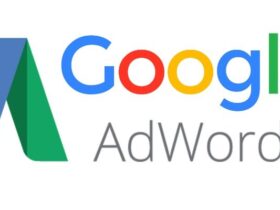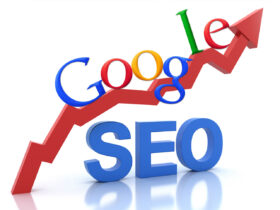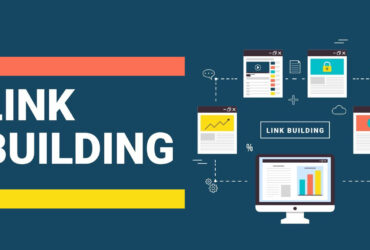When it comes to hyperlink construction, there is a point where ideas ought to be speculative. Except for apparent link junk mail, there is no way to recognize how Google reacts to positive forms of links as a reality.
The fact that it’s difficult to understand if Google isn’t passing PageRank from a link makes it hard to realize whether or not something is operating. Guest article hyperlink building is a clean way to construct links. That makes it famous and has opened the door to abuse. Years ago, former Google engineer Matt Cutts counseled guests running a blog. My opinion on guest article link construction is based on experience (take it or leave it). If you’re chance-averse and need to be cautious, don’t try to build hyperlinks with articles unless you do it with a no-follow hyperlink. Approaching it with this mindset will open up new possibilities.

Why Might Guest Articles be Penalized or Demoted?
Not all guest article initiatives acquire penalties. It’s tough to wager why some tasks fail; however, I would guess that setting articles on websites with negative outlines will be problematic. I agree that Google relies heavily on outbound hyperlink styles among websites to reveal networks of unsolicited mail. Spam websites shape networks composed of spammy websites. Linking out to normal sites does not forestall the formation of those junk mail networks; Google can nonetheless see them.
Non-spam websites, ordinary sites, normally don’t exist within one’s junk mail networks because regular websites don’t link out to unsolicited mail websites. So it’s nonetheless viable that sites within the “ordinary” variety of link neighborhoods could interact in positive practices and not be caught out beyond having their hyperlinks demoted (examine the Reduced Link Graph to find out about this process).
By mapping out the link networks to perceive junk mail neighborhoods, in concept, Google can take away one’s pages from the rating equation altogether. On the normal facet, Google can nevertheless display those best websites without a doubt their sketchy inbound links for ranking functions. The concept of websites that can be too large to fail has been around for a long time. In my opinion, the idea that a site is too large to fail isn’t always the motive they don’t forget. It’s extra about customers looking to look at positive sites and Google being obligated to expose those websites, regardless of any hyperlink junk mail. Can you believe Googling for eBay, and it doesn’t rank at the top? It may seem unfair, but it doesn’t feel like penalizing a website that customers need to peer.
Guest Article Tactics to Avoid
Here are what I consider things to avoid. A rule of thumb is that if it’s something explicitly intended to manipulate Google (rather than assisting customers), then it’s problematic.
Multiple links returned to the promoted website
Keyword-rich anchor textual content
Promotional text hyperlinks inside the frame of the published articles. Articles positioned on websites that solicit fees for the e-book Are on non-SEO websites that function as articles and hyperlinks to SEO sites. If the website online is about a non-search engine marketing area of interest, and a website looking for “hyperlink building” or “search engine optimization” reveals articles written through SEO to benefit that search engine optimization, run. I bear in mind those websites poisoned. Use something non-applicable word you want to check how applicable the website online is; don’t restrict yourself to search engine marketing-associated terms. Sites submit articles with hyperlinks to low-quality websites. What’s a low-excellent internet site? One that’s heavily optimized for scores and associated sales.
Beware of Copying Your Competitors
Just because a competitor is accomplishing large visitor article posting no longer means you should do the same. It may be their ratings are not due to the articles. Even supposing they are, hyperlinks aren’t the most effective reason for Google to rank a website over others. Ultimately, the content and user expectancies determine which websites rank at the pinnacle.
A Safe Way to Build Article Links
The safest way to technique guest articles is with the aid of now, not considering them as hyperlink constructing tasks. Think of them as a manner to get the word out about your website online, your product, or your provider. Once sufficient people understand your web page, demand for it grows, and people begin anticipating seeing your site in the SERPs. Google ranks pages that customers assume they should look at. Google ranks internet pages characteristic of the answers customers expect to see.
So, rather than specializing in influencing Google with metrics like hyperlinks, it makes sense to persuade humans with an outstanding product, first-rate service, useful statistics, and so forth. Guest article projects centered on the growing attention of that greatness are, in my estimation, the better way to approach guest articles. This approach set follows all hyperlinks again for your web page.
User-Centered Article Marketing
New possibilities open up by changing the purpose of guest articles away from influencing Google and towards influencing humans. The reality is that an information organization no longer hyperlinks out, not subjects. The factor is now to get the word out. There is no reason to get disappointed or pass on a news website that does not link out. It’s essentially unfastened marketing.
Focusing on influencing humans opens you up to print initiatives, newsletter tasks, or even podcasting initiatives. There are nearly no limits to how far you can take this technique. So, instead of attempting to influence Google, you need not get to try to persuade users. You may also discover that it is profitable without worrying about what Google thinks.











